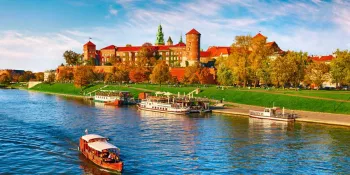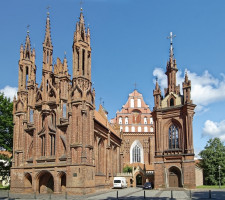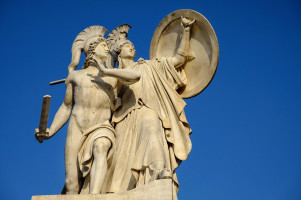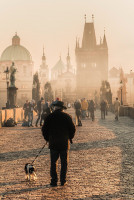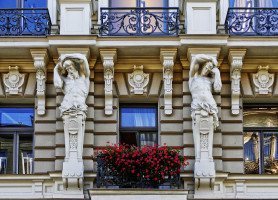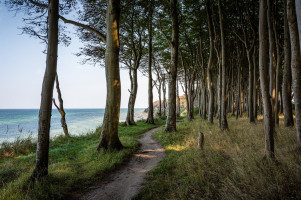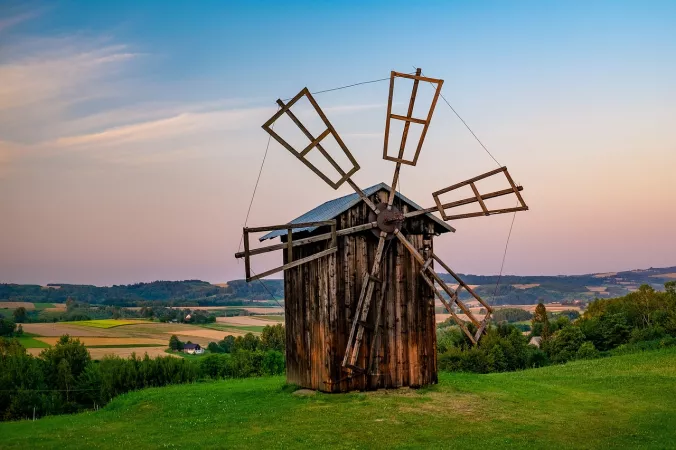
Poland
Duration
7 to 14 Days
7 to 14 Days
Best time to visit
May-Aug
May-Aug
Theme
Heritage, Wildlife
Heritage, Wildlife
Poland Travel Guide
Poland, located in Central Europe, is a country known for its rich history, stunning landscapes, and vibrant culture. With a history dating back to the medieval era, Poland has been a significant player in European politics and has endured various invasions and occupations. The country is famous for its resilient spirit, symbolized by sites like Warsaw's Old Town, meticulously reconstructed after WWII. Poland boasts a diverse geography, from the sandy beaches of the Baltic Sea to the picturesque Tatra Mountains.Top Attractions in Poland
1. Explore the historic city of Krakow, with its stunning architecture and lively market square. 2. Visit the Auschwitz-Birkenau Memorial and Museum to pay homage to the victims of the Holocaust. 3. Discover the natural beauty of the Masurian Lake District, perfect for outdoor enthusiasts. 4. Wander through the medieval streets of Gdansk and soak in the maritime history. 5. Experience the charm of Wroclaw's colorful Market Square and the iconic Ostrow Tumski.Poland is Famous for
Poland is most famous for its resilient spirit, rich history, and vibrant culture.Top Attractions in Poland
- The historic city of Krakow - Auschwitz-Birkenau Memorial and Museum - Masurian Lake District - Gdansk's maritime history - Wroclaw's colorful Market SquareWhat's Great about Travelling to Poland?
- Rich history and cultural heritage - Stunning landscapes and natural beauty - Vibrant cities and charming towns - Warm and welcoming locals - Delicious Polish cuisine to indulge inWhat's Not So Great about Travelling to Poland?
- Language barrier for non-Polish speakers - Weather can be unpredictable, especially in winter - Some tourist areas can get crowded during peak seasons - Limited vegetarian/vegan food options in traditional eateries - Public transportation may not always be reliableTravel Tips for Poland
- Check visa requirements before travel - Use public transportation or rent a car for flexibility - Be cautious of pickpockets in touristy areas - Try traditional Polish dishes like pierogi and bigos - Respect local customs and traditionsImportant Poland trip information
- Ideal Duration: A week to 10 days is ideal to explore major attractions.
- Best Time to Visit: Spring (April to June) and fall (September to October) for pleasant weather.
- Nearby Airports and Railway Stations: Warsaw Chopin Airport, Krakow John Paul II Airport, Warsaw Central Railway Station.
Top 3 Places to visit in Poland
Total
3,13,000
*EXCLUDING APPLICABLE TAXES 5.0 Ratings
( 25 Reviews )
( 25 Reviews )
Per Person
91,755
*EXCLUDING APPLICABLE TAXES 5.0 Ratings
( 396 Reviews )
( 396 Reviews )
Per Person
1,60,887
*EXCLUDING APPLICABLE TAXES 5.0 Ratings
( 396 Reviews )
( 396 Reviews )
Per Person
1,25,864
*EXCLUDING APPLICABLE TAXES 5.0 Ratings
( 396 Reviews )
( 396 Reviews )
Per Person
2,25,800
*EXCLUDING APPLICABLE TAXES 5.0 Ratings
( 396 Reviews )
( 396 Reviews )
Per Person
1,35,914
*EXCLUDING APPLICABLE TAXES 5.0 Ratings
( 396 Reviews )
( 396 Reviews )
FAQ's on Poland
Q1: What is the best time to visit Poland?
The best time to visit Poland is during the summer months from June to August when the weather is warm and ideal for exploring the cities and countryside. Additionally, Poland's cities come alive with festivals and events during this time. Spring and early autumn are also good times to visit for milder weather and fewer crowds, especially for outdoor activities like hiking in the Tatra Mountains.
Q2: Do I need a visa to travel to Poland?
Travelers from the EU, EEA, and many other countries do not need a visa for short visits to Poland. However, it is essential to check the specific visa requirements based on your nationality and the purpose of your visit. Make sure your passport is valid for at least three months beyond your intended departure date from Poland.
Q3: What are the must-visit attractions in Poland?
Some of the must-visit attractions in Poland include the historic city of Krakow with its stunning Old Town and Wawel Castle, the somber but important Auschwitz-Birkenau Memorial and Museum, the beautiful Masurian Lakes region for outdoor activities, the medieval town of Gdansk on the Baltic coast, and the capital city of Warsaw with its rich history and vibrant cultural scene.
Q4: Is Poland a safe place to travel?
Poland is generally a safe destination for travelers. Like any other country, it is advisable to stay cautious in crowded areas and watch out for pickpockets, especially in touristy places. Avoid confrontations and be aware of your surroundings, particularly at night. The emergency number in Poland is 112 for all services.
Q5: What is the local currency in Poland and can I use credit cards?
The local currency in Poland is the Polish Zloty (PLN). Credit cards are widely accepted in major establishments like hotels, restaurants, and shops in cities and tourist areas. However, it's recommended to carry some cash for smaller purchases and when visiting more rural areas. ATMs are easily found throughout the country.
Q6: What is the local cuisine like in Poland?
Polish cuisine is hearty and rich, with popular dishes like pierogi (dumplings), bigos (hunter's stew), and oscypek (smoked cheese). Traditional Polish meals often include meat, potatoes, cabbage, and sour cream. Vegetarians can find options like placki ziemniaczane (potato pancakes) and various vegetable dishes. Make sure to try traditional desserts like sernik (cheesecake) and szarlotka (apple pie) as well. Polish vodka and craft beers are also worth tasting.
Q7: What transportation options are available in Poland?
Poland has a well-developed transportation system that includes trains, buses, trams, and metro in major cities like Warsaw and Krakow. Intercity trains are efficient for traveling between cities, while buses are a good option for reaching smaller towns and villages. Taxis are readily available but make sure to use licensed services. Car rental is also a popular choice for exploring the countryside and remote areas.
Q8: Are there any cultural norms or etiquette I should be aware of when visiting Poland?
When visiting Poland, it's important to greet people with a handshake and maintain eye contact during conversations. Punctuality is appreciated, so try to be on time for meetings and appointments. When dining with locals, it's customary to wait for the host to start eating before you begin. Dress modestly when visiting churches or religious sites, and remove your hat indoors. Tipping is common in restaurants and cafes, usually around 10% of the bill. Learning a few basic Polish phrases like "hello" (cześć) and "thank you" (dziękuję) can also show respect for the local culture.
Q9: I am a travel agent. How can I buy travel leads of Poland?
Register yourself as a travel agent at agents.tripclap.com and then you can buy travel leads to Poland once your account is approved. For more details contact our support team at +91-8069186564 or support@tripclap.com
